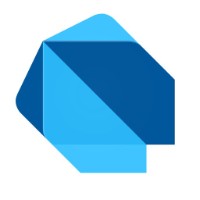⚡
【Flutter】React Native エンジニアが学ぶ レイアウト
普段は業務で React Native を使用したアプリケーションを作成しているので、そこと対比しつつ学んでいます。
FlutterのUIレイアウト
React Native ではWebで培ったHTML/CSSの知識を生かしてマークアップできます。Flutterでは若干勝手が異なります。
- div や View の代わりに
Containerを使用する -
Column/Rowで レイアウトを調整できる -
Expandedで flex する -
Stackで要素を重ねる
Container
React / React Native でいう div や View に似ています。Container には高さや横幅、背景色など様々な設定ができます。UIの基本的な単位となるものです。
class MyApp extends StatelessWidget {
Widget build(BuildContext context) {
return MaterialApp(
title: "MyApp",
home: Scaffold(
body: Center(
child: Container(
color: Colors.blue,
width: 300.0,
height: 300.0,
child: Text("Hello World!"),
alignment: Alignment.center,
),
),
),
);
}
}
Row / Column
Row/Column を利用することで、Gridレイアウトが可能です。
ポイントとしては、mainAxisAlignment を使用して 列や行を画面のどの位置に配分するかを指定することです。
これはWeb や React Native でいうと justifyContent や alighnItems の設定と同様です。
class MyApp extends StatelessWidget {
Widget build(BuildContext context) {
return MaterialApp(
title: "MyApp",
home: Container(
child: Row( // 行
mainAxisAlignment: MainAxisAlignment.spaceEvenly, // 他にstart、end、spaceAroundなど
children: <Widget>[
Column( // 列
mainAxisAlignment: MainAxisAlignment.center, // 中央に配置
children: <Widget>[
Container( color: Colors.blue, width: 100, height:100 ),
Container( color: Colors.red, width: 100, height:100 ),
Container( color: Colors.yellow, width: 100, height:100 ),
],
),
Column( // 列
mainAxisAlignment: MainAxisAlignment.center, // 中央に配置
children: <Widget>[
Container( color: Colors.green, width: 100, height:100 ),
Container( color: Colors.orange, width: 100, height:100 ),
Container( color: Colors.white, width: 100, height:100 ),
],
),
],
),
),
);
}
}
Expanded
これはWeb や React Native でいうと flex の設定と同様です。
class MyApp extends StatelessWidget {
Widget build(BuildContext context) {
return MaterialApp(
title: "MyApp",
home: Container(
child: Row(
children: <Widget>[
Expanded( // 引き延ばして表示
flex: 1,
child:Container( color: Colors.red)
),
Expanded(
flex: 2,
child:Container( color: Colors.green),
),
Expanded(
child:Container( color: Colors.blue),
flex: 3,
),
],
),
),
);
}
}
Stack
要素同士を重ねる場合は Stackを使用します。配列内の最初の要素が一番下、最後の要素が一番上になります。
class MyApp extends StatelessWidget {
Widget build(BuildContext context) {
return MaterialApp(
home: Scaffold(
appBar: AppBar(
title: Text("MyApp"),
),
body: Stack( // 重ねて表示
children: <Widget>[
Container(
width: 200,
height: 200,
color:Colors.red
),
Container(
width: 100,
height: 120,
color: Colors.green,
),
Container(
width: 50,
height: 70,
color: Colors.blue,
)
],
)
)
);
}
}
参考


Discussion